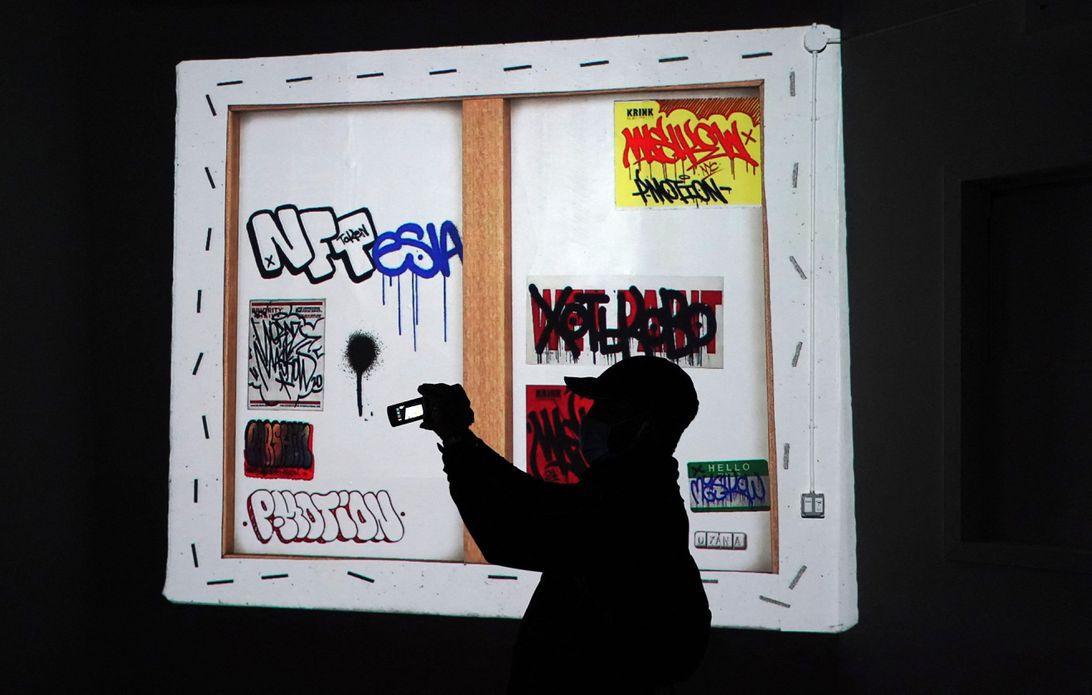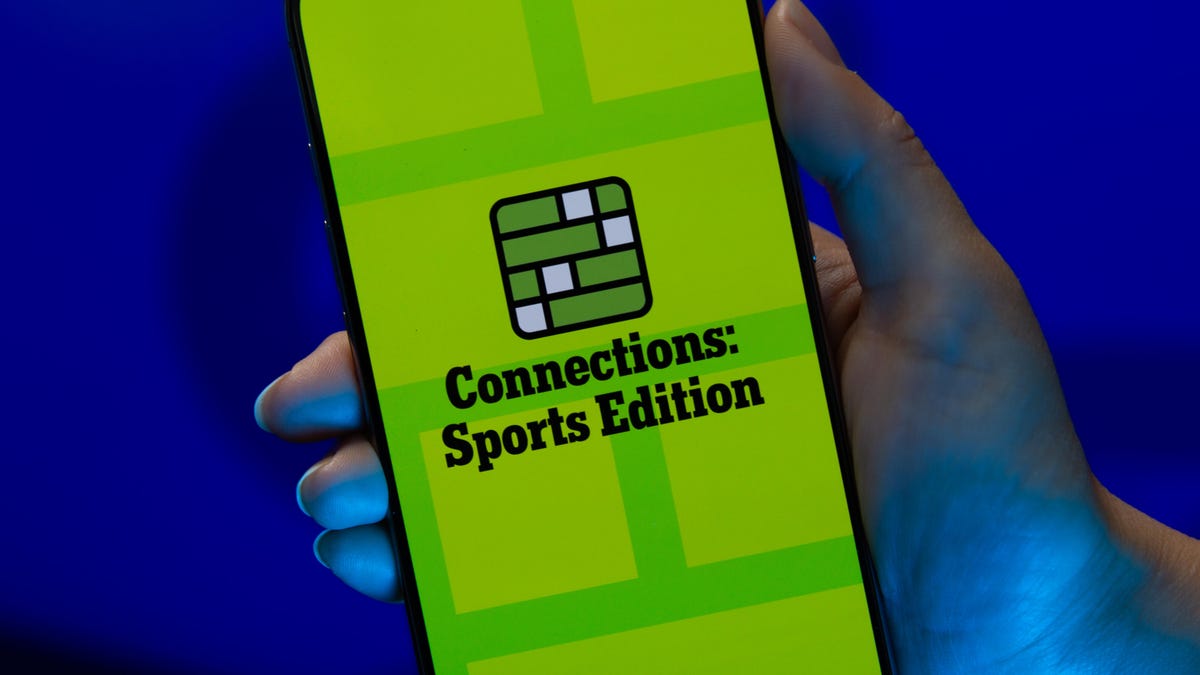Technologies
What’s the big deal about NFTs? Here’s the madness behind these expensive digital tokens
NFTs are selling out in minutes for thousands of dollars. We’ll explain why.

NFTs, or nonfungible tokens, can be tied to a video highlight, a meme or a tweet. But what are they? Think of NFTs as a digital asset that’s expensive but may make you a lot of money in the future (or maybe not) — similar to cryptocurrency but not quite (more below). But it doesn’t quite mean that you own an asset or piece of art (more below).
The tokens are so popular that Time Magazine‘s 4,500 TIMEPieces reportedly sold out in one minute on Wednesday’s release date. And Tiger Woods recently sold NFTs of digital autographed collectibles (more below). If you’re looking to buy an NFT, the starting price may be affordable but the bidding wars for NFTs could make the digital token worth a lot more. The interest has created new levels of hype from Visa, Warner Music Group and Nike.
In short, NFTs offer a blockchain-created certificate of authenticity for a digital asset or piece of art. If this doesn’t make much sense to you, it’s OK. We’ll break down what NFTs really are, how much they cost and how you can bid on a digital asset to have an NFT of your own.
What’s an NFT?
This is the part that takes a bit of open-mindedness. An NFT is a unique digital token, with most using the Ethereum blockchain to digitally record transactions. It’s not a cryptocurrency like Bitcoin or Ethereum, because those are fungible — exchangeable for another Bitcoin or cash. NFTs are recorded in a digital ledger in the same way as cryptocurrency, so there’s a listing of who owns each one.
What makes an NFT unique is the digital asset tied to the token. This can be an image, video, tweet or piece of music that’s uploaded to a marketplace, which creates the NFT to be sold.
What kind of NFTs can I buy?
NFTs can be tied to any digital asset. Anything you see online can be an NFT — music, social media posts, clip art and more. Today, Sorare released its «Super Rare» Lionel Messi digital trading card that’s currently bidding at €29,992.75, equivalating to over $35,000. Sorare also announced that it raised $680 million for its next-level sports fantasy game. The funding is currently led by SoftBank.
Tiger Woods is currently thousands of digital collectibles on Autograph on the DraftKings marketplace. The collection starts at $250. Naomi Osaka, Derek Jeter and Tonk Hawk are also releasing digital collectibles on Autograph, which is co-founded by Tom Brady.
But NFTs are going far beyond sports. Recently, Fortune gave its readers a chance to get in on the NFT craze. The company sold 256 copies of the limited edition cover from the graphic artist Pplpleasr for Fortune’s August/September magazine on OpenSea. The copies sold out within five minutes starting at 1 Etherum (estimated $3,000). But the NFTs were available for resale at three times the cost.
And in August, a clip art of a rock, better known as Ether Rock, was sold for $400,000 Etherum (estimated $1.3 million). Two weeks ago, it was valued at $97,716. And in August, Visa announced its NFT CryptoPunks purchase for $150,000 in Ethereum. The financial corporation believes that NFTs play a big role in the «future of retail, social media, entertainment, and commerce.» And Vine’s co-creator, Dom Hoffman, is reportedly inventing a new way to gamify NFTs with his fantasy gaming console, Supdive.
As the hype for NFTs grows, expect more digital assets to come up for sale and bring in some big money.
Where can I buy an NFT?
While you may not want to jump right in bidding six figures, there are multiple NFT marketplaces out there to check out, with Opensea being the biggest. Buyers can search for art, domain names and random collectibles to bid on without having to break the bank. And Woods’ digital collection is one of the many NFT collections available on DraftKings marketplace, including Tony Hawk’s collection.
And in early October, Christie’s will auction off 200 NFTs of featured Art Blocks art from its Post-War to Present collection, some of today’s most popular NFTs. The live bidding will happen in Ethereum on Oct. 1. The art sale will start at $50,000.
On the other hand, if you want to sell an NFT of your art, you can use NFTify, the Shopify NFT store, to sell NFTs without creating your own store. You’ll also need a MetaMask account to get going. And Burberry recently announced a partnership with Mythical Games to gamify buying, selling and collecting toys as NFTs through the Blankos Block Party game. CNET’s own Chris Parker also made a step-by-step guide on how to make and sell your own NFT, in the video below.
If I have an NFT, do I own the asset?
Nope.
That’s the real kicker to understanding the whole concept. The person who buys the NFT doesn’t own the actual asset.
«NFTs challenge the idea of ownership: digital files can be reproduced infinitely and you do not (usually) buy the copyright or a license when purchasing an NFT,» said Jeffrey Thompson, associate professor at the Stevens Institute of Technology in Hoboken, New Jersey.
For example, the creator of the Nyan Cat meme sold an NFT of it for $590,000. The person who bought the token owns the token, but doesn’t actually own the meme. That still belongs to the creator, who held onto intellectual and creative rights.
What the owner of the token has is a record and a hash code showing ownership of the unique token associated with the particular digital asset. People might download Nyan Cat and use it on social media if they want, but they won’t own the token. This also means they can’t sell the token as the owner can.
Why are NFTs so expensive?
As with physical collectibles such as Beanie Babies, baseball cards and toys, there’s a market for NFTs. The buyers tend to be tech-savvy individuals who understand the idea of wanting to purchase digital goods and likely made a killing this past year with cryptocurrencies. Ethereum, for example, went from just over $100 last March to a current price of about $3,400. In some cases, buyers are just flexing their digital wallets to show off how much crypto they have, but for others, there’s a deeper interest.
«Specifically for art-related NFTs, there is a huge surge in demand due to their novelty and creativity of early artists,» Jason Lau, chief operating officer of crypto exchange OKCoin, said in an email. «Whether it’s a physical work with an attached NFT (think of it as a digital autograph and proof of veracity), or an entirely digital work (where the NFT is the art), this new medium is opening new ways for collectors and artists to explore their relationship with the artwork itself.»
It’s also great for the artists, says Lau. By selling digital art directly to those interested, an artist can begin monetizing work without having to try to sell it in a gallery.
What are the pitfalls of NFTs?
A drawback is the hundreds of dollars in fees required to create an NFT. If you’re making your own token on the Ethereum blockchain, you need to use some Ethereum, which as mentioned earlier is kind of pricey. Then after you make an NFT, there’s a «gas» fee that pays for the work that goes into handling the transaction and that’s also based on the price of Ethereum. Marketplaces simplify the process by handling everything for a fee when an NFT is sold.
There’s also an environmental cost. Like Bitcoin, Ethereum requires computers to handle the computations, known as «mining,» and those computer tasks require a lot of energy. An analysis from Cambridge University found that mining for Bitcoin consumed more energy than the entire country of Argentina. Ethereum is second to Bitcoin in popularity, and its power consumption is on the rise and comparable to the amount of energy used by Libya.
Technologies
You Can Watch an Exclusive Avatar: Fire and Ash Scene on TikTok Right Now
Disney and TikTok partner on an immersive content hub for James Cameron’s latest movie about the alien Na’vi.
If you’re not quite ready to head to the theater to watch Avatar: Fire and Ash, an exclusive scene preview might sell you on the visual spectacle. As part of a new collaboration with the social media giant, Disney is posting snippets of its new movie to its TikTok account.
This scene isn’t part of any trailer and won’t be posted to other social media accounts, making TikTok the only place you can view it — unless you buy a movie ticket. A first look at the new movie’s scenes isn’t the only Avatar-related bonus on the social media platform right now, either. TikTok has partnered with the house of mouse to bring an entire «immersive content hub» to the app.
A special section of TikTok includes quizzes and educational videos that explore the alien world of Pandora shown off in the movies. On TikTok, you can take a personality quiz to find out what Na’vi clan you most closely align with and unlock a special profile picture border to use on your account.
Science and fiction blend together with a series of videos from real doctors who explain the basis for some of Avatar’s world-building. If you want to learn about exoplanets or how realistic the anatomy of the movie’s alien animals is, these videos will feed your brain while still providing entertainment value.
Perhaps the most enticing part of Disney’s latest social media collaboration is the opportunity for fans to win prizes and trips. TikTok creators who make edits with the #TikTokAvatarContest hashtag are entered into a competition to win Avatar merchandise. The biggest winners will be able to take a trip to visual effects studio Wētā Workshop in New Zealand or visit Avatar director James Cameron’s Lightstorm Entertainment Studio in Los Angeles.
Avatar: Fire and Ash is the third installment in director Cameron’s cinematic passion project. While the first Avatar movie was released in 2009, Cameron didn’t release another entry in the franchise until 2022. In total, there is a five-movie arc planned for the indigo alien Na’vi on the moon of Pandora.
The Avatar movies are known for pushing the boundaries of CGI visual effects in cinema. They are also historically big winners at the box office: the original Avatar is the highest-grossing film of all time, earning $2.9 billion across its theatrical releases. Its sequel, Avatar: The Way of Water, is the third-highest-grossing film of all time, trailing Avengers: Endgame. You can stream those movies on Disney Plus.
It remains to be seen whether Avatar: Fire and Ash will financially live up to its predecessors. The film currently has mixed reviews from critics on Rotten Tomatoes.
Technologies
Brain-Inspired Algorithms Could Dramatically Cut AI Energy Use
A new study dives into a major redesign for AI architecture.

One major issue facing artificial intelligence is the interaction between a computer’s memory and its processing capabilities. When an algorithm is in operation, data flows rapidly between these two components. However, AI models rely on a vast amount of data, which creates a bottleneck.
A new study, published on Monday in the journal Frontiers in Science by Purdue University and the Georgia Institute of Technology, suggests a novel approach to building computer architecture for AI models using brain-inspired algorithms. The researchers say that creating algorithms in this manner could reduce the energy costs associated with AI models.
«Language processing models have grown 5,000-fold in size over the last four years,» Kaushik Roy, a Purdue University computer engineering professor and the study’s lead author, said in a statement. «This alarmingly rapid expansion makes it crucial that AI is as efficient as possible. That means fundamentally rethinking how computers are designed.»
Don’t miss any of our unbiased tech content and lab-based reviews. Add CNET as a preferred Google source. Don’t miss any of our unbiased tech content and lab-based reviews. Add CNET as a preferred Google source.
Most computers today are modeled on an idea from 1945 called the von Neumann architecture, which separates processing and memory. This is where the slowdown occurs. As more people around the world utilize data-hungry AI models, the distinction between a computer’s processing and memory capacity could become a more significant issue.
Researchers at IBM called out this problem in a post earlier this year. The issue computer engineers are running up against is called the ‘memory wall.’
Breaking the memory wall
The memory wall refers to the disparity between memory and processing capabilities. Essentially, computer memory is struggling to keep up with processing speeds. This isn’t a new issue. A pair of researchers from the University of Virginia coined the term back in the 1990s.
But now that AI is prevalent, the memory wall issue is sucking up time and energy in the underlying computers that make AI models work. The paper’s researchers argue that we could try a new computer architecture that integrates memory and processing.
Inspired by how our brains function, the AI algorithms referred to in the paper are known as spiking neural networks. A common criticism of these algorithms in the past is that they can be slow and inaccurate. However, some computer scientists argue that these algorithms have shown significant improvement over the last few years.
The researchers suggest that AI models should utilize a concept related to SNNs, known as compute-in-memory. This concept is still relatively new in the field of AI.
«CIM offers a promising solution to the memory wall problem by integrating computing capabilities directly into the memory system,» the authors write in the paper’s abstract.
Medical devices, transportation, and drones are a few areas where researchers believe improvements could be made if computer processing and memory were integrated into a single system.
«AI is one of the most transformative technologies of the 21st century. However, to move it out of data centers and into the real world, we need to dramatically reduce its energy use,» Tanvi Sharma, co-author and researcher at Purdue University, said in a statement.
«With less data transfer and more efficient processing, AI can fit into small, affordable devices with batteries that last longer,» Sharma said.
Technologies
Today’s NYT Connections: Sports Edition Hints and Answers for Dec. 17, #450
Here are hints and the answers for the NYT Connections: Sports Edition puzzle for Dec. 17, No. 450.

Looking for the most recent regular Connections answers? Click here for today’s Connections hints, as well as our daily answers and hints for The New York Times Mini Crossword, Wordle and Strands puzzles.
Today’s Connections: Sports Edition is pretty challenging. How well do you know French soccer? If you’re struggling with today’s puzzle but still want to solve it, read on for hints and the answers.
Connections: Sports Edition is published by The Athletic, the subscription-based sports journalism site owned by The Times. It doesn’t appear in the NYT Games app, but it does in The Athletic’s own app. Or you can play it for free online.
Read more: NYT Connections: Sports Edition Puzzle Comes Out of Beta
Hints for today’s Connections: Sports Edition groups
Here are four hints for the groupings in today’s Connections: Sports Edition puzzle, ranked from the easiest yellow group to the tough (and sometimes bizarre) purple group.
Yellow group hint: Put it on your noggin.
Green group hint: Goes before a division of the year.
Blue group hint: French football.
Purple group hint: Think Louisville Slugger.
Answers for today’s Connections: Sports Edition groups
Yellow group: Headgear.
Green group: Prefixes to -season.
Blue group: Ligue 1 teams.
Purple group: Batting ____.
Read more: Wordle Cheat Sheet: Here Are the Most Popular Letters Used in English Words
What are today’s Connections: Sports Edition answers?
The yellow words in today’s Connections
The theme is headgear. The four answers are cap, hat, mask and visor.
The green words in today’s Connections
The theme is prefixes to -season. The four answers are mid, off, post and pre.
The blue words in today’s Connections
The theme is Ligue 1 teams. The four answers are Lens, Marseille, Nice and PSG.
The purple words in today’s Connections
The theme is batting ____. The four answers are average, gloves, practice and stance.
Don’t miss any of our unbiased tech content and lab-based reviews. Add CNET as a preferred Google source.
-

 Technologies3 года ago
Technologies3 года agoTech Companies Need to Be Held Accountable for Security, Experts Say
-

 Technologies3 года ago
Technologies3 года agoBest Handheld Game Console in 2023
-

 Technologies3 года ago
Technologies3 года agoTighten Up Your VR Game With the Best Head Straps for Quest 2
-

 Technologies4 года ago
Technologies4 года agoBlack Friday 2021: The best deals on TVs, headphones, kitchenware, and more
-

 Technologies4 года ago
Technologies4 года agoVerum, Wickr and Threema: next generation secured messengers
-

 Technologies4 года ago
Technologies4 года agoGoogle to require vaccinations as Silicon Valley rethinks return-to-office policies
-

 Technologies4 года ago
Technologies4 года agoOlivia Harlan Dekker for Verum Messenger
-

 Technologies4 года ago
Technologies4 года agoiPhone 13 event: How to watch Apple’s big announcement tomorrow
